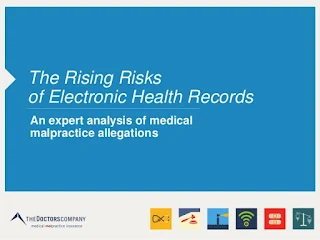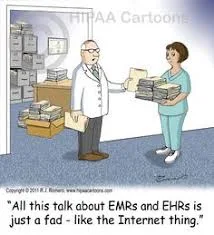Malpractice liability risks for physicians, practices, and healthcare organizations (HCOs) continually change, owing to a variety of healthcare and technology issues. From changes in treatment and care strategies to the ability of your electronic health record (EHR) to support new patient service tactics and care responsibilities, you need to be aware of these risks. You also need to manage your EHR use to address potential malpractice-related risks.
On the plus side, as more patient care tools are built into EHRs and as more active patient care interventions become part of your patient treatment routine, EHRs may help you manage patients and your clinical activities.
However, built-in EHR features that display warnings and advisories can produce a cacophony of visual and auditory noise that can be distracting. Physicians need to be able to control and manage them. EHR-generated advisories that are misleading or inappropriate could disrupt patient service, confuse physicians, and undermine confidence in the EHR.
If a malpractice case arises, the plaintiff could see evidence that's residing within your EHR, and use it against you. For example, EHR drug interaction warnings as well as notifications of incoming secure messages are tracked and recorded by the EHR. Such information may be used for internal performance tracking, managing clinical operations, or to review how your practice or HCO responded to a patient issue, related to a malpractice claim.
Indeed, many plaintiffs home in on ineffective EHR use and incomplete information as a weapon to undermine the entire EHR-based patient record as well as the quality of care provided to the patient.
The most important defense and plaintiff tool is the EHR's audit trail.
If your practice or HCO is faced with a malpractice lawsuit, your EHR will be closely examined to identify the sequence of events recorded in the EHR. Sometimes this examination will show records of diligent patient care and services that will support defense of a claim. Unfortunately, many discovery processes uncover open care items, incomplete messages, unsigned notes, delayed clinical response, and other dangling issues that call into question what was done for the patient and when it was done.
Lower Malpractice Risk Through Video Visits (Telemedicine)
Telemedicine visits are conducted through a HIPAA security-compliant web meeting with a patient. A physician might conduct a video visit in response to a care management issue, receipt of the secure message from the patient portal, or scheduled in place of an office visit. Telemedicine visits may include use of web-enabled diagnostic tools, such as a spirometer and a blood pressure/pulse device.
To lower malpractice risk, the physician or practice must document the encounter on a timely basis and ensure that the instructions and recommendation to the patient are clearly conveyed and any follow-up issues addressed on a timely basis. Note that the patient may record the telemedicine visit. It may be a useful tool to encourage patient care and support the due diligence efforts of the physician or practice, as long as the telemedicine visit is properly structured and conducted to explicitly and clearly communicate the physician's decisions and recommendations.
Additional follow-up with patients on video visits may be a critical component to your patient service strategy that will also lessen the chance of any problems. For example, a recommendation to change medications during a video visit may trigger a follow-up call on the effect of the medication change through a care management arrangement.
EHR Modularization Presents New Lawsuit Threats
With several EHRs, the evolving patient care requirements, including care management and telemedicine, are addressed through interfaces to specialized software. Many EHRs have been interfaced with patient portal, care management, patient contact management, and diagnostic software. Interfaced products typically exchange a subset of information that is used to support the patient services but may complicate patient record-keeping and raise your malpractice liability risks.
To understand the complete situation, and also see the potential danger, a physician or staff may have to access several software systems. For example:
- Some EHR vendors use a third-party patient portal that maintains its own records of interactions with patients outside of the basic EHR. The patient portal interactions are not visible from the EHR view, and the physician may not get an accurate sense of the patient's evolving condition.
- Care management software may allow the user to create a report from the patient services, which is saved as an image on the EHR. The care management information may be reviewed through accessing the image, but the care management information will not be displayed in context with EHR-based activities, such as prescriptions issued or telemedicine information.
New Malpractice Risks in Your EHR: Working with an EHR can be difficult, but even worse, there are ways that your data input could work against you if a possible malpractice lawsuit arises.


No comments:
Post a Comment